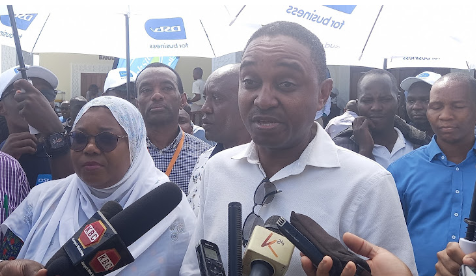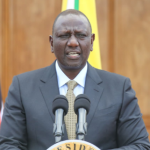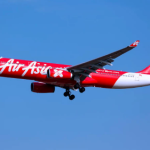What began as peaceful demonstrations by Gen Zs two weeks ago turned violent last week, resulting in vandalism and loss of lives, alarming the international community.
This situation has caused significant concern among hoteliers and tourism industry players in Kenya, who are now facing cancellations from some international markets, potentially dealing a severe blow to the sector.
The Kenya Association of Hotelkeepers and Caterers (KAHC) reported that hotels have started receiving cancellation requests from both international and domestic markets, although the numbers remain low. These cancellations are attributed to the ongoing demonstrations across the country.
Despite President William Ruto’s decision to withdraw the contentious Finance Bill 2024, the protests continued last week. KAHC Chief Executive Mike Macharia highlighted that protests have historically harmed tourism, urging Kenyans to cease the demonstrations as international source markets grow increasingly uneasy.
“By and large the business is going on well though we have received requests for cancellations. We are urging our clients to continue with their visits,” Macharia told the Star.
Cancellations could significantly impact Kenya’s travel and tourism industry, which heavily depends on the international market. Tourism is a key foreign exchange earner for the country. According to the Tourism Research Institute (TRI), Kenya’s earnings from tourism surged by 32 percent to Sh352.5 billion last year, with international arrivals increasing to 1.96 million, up from 1.48 million visitors in 2022.
“The 2023 figure represents a substantial increase compared to the previous year, highlighting the country’s potential and appeal in the global tourism landscape,” TRI noted in its report.
The growth in tourism translates to various positive implications for the local economy, including increased revenue, job opportunities, and overall development of the tourism sector. The top five sources of international arrivals were the US with 265,307 visitors, Uganda (201,620), Tanzania (157,818), the United Kingdom (156,701), India (94,273), and Germany (77,907).
A significant portion, 45% or 875,272 visitors, came to Kenya for holiday or leisure. Additionally, 465,851 people visited friends and relatives, while business and conferences accounted for 461,042 visitors.
Although the US remains the top source of tourists, European markets are also crucial for Kenya’s tourism industry, with major sources including the UK, Germany, Italy, France, the Netherlands, Spain, Poland, Sweden, Norway, and Belgium.
European tourists tend to favor coastal destinations like Mombasa, Lamu, Malindi, and Diani, while US tourists predominantly visit the Mara and Mount Kenya circuits.
The Kenya Association of Hotelkeepers and Caterers (KAHC) has assured visitors of their safety, advising those considering cancellations to reschedule their travel plans instead.
Twiga Tours, a premier safari company in Kenya and East Africa, noted that there have not been disruptions in safari and accommodation bookings from its key sources, which include the US, Europe, and South Asia.
“We have assured all visitors that our international and domestic airports, roads to national parks, and the parks themselves are safe and accessible. This protest was an internal affair and tourists are not targets at all which is the case. It is safe for travellers,” CEO Minaz Manji said.
INVESTMENT AND TARGETS
KAHC chairman Chris Musau, during the 20th annual KAHC symposium in Diani on Friday, lauded the government for extending 4.9 billion to Tourism Fund and 2.2 billion to Tourism Promotion Fund in the 2024-2025 budget.
“The tourism sector showed robust performance, marking noteworthy steps towards recovery after facing challenges in previous years. Against the background of global uncertainties, the sector’s commitment to invigorating the industry is evident in the strategies implemented and the positive results attained,” he noted.
He said despite the strong performance, the country needs to do more to grow the sector.
“First, we need to increase our air capacity into JKIA and Moi International Airport Mombasa. Secondly, we need to build a convention center in Nairobi and Mombasa,” Musau said.
Tourism Principal Secretary John Ololtuaa said the national government is planning to conduct a National Classification Exercise of hotels, in an exercise that will be led by the Tourism Regulatory Authority.
The mapping out, he said, exercise will help market tourism and promote the sector as well as ensure hotels maintain high standards.
“We want to know the number of both big and small hotels to make it easy for identification and marketing,” he said.
Kenya plans to reach 5.5 million international by 2028, in an ambitious plan that involves the private sector, especially on marketing destinations.
The country’s best year remains 2019 when arrivals hit a high of 2.04 million visitors with earnings of Sh296.2 billion.
Earnings are expected to hit Sh359.1 billion this year and then Sh396.1 billion next year.
Tourism Research Institute has projected this year’s arrivals at 2.2 million.
“The projections were informed by global economic factors and Covid recovery patterns. The effects of the Russia invasion of Ukraine on some key markets and on global tourism supply channels was also taken on board,” TRI acting Chief Executive Officer David Gitonga told the Star.
It is based on economically tested tourism prediction models that TRI has acquired, contracted, he added.



